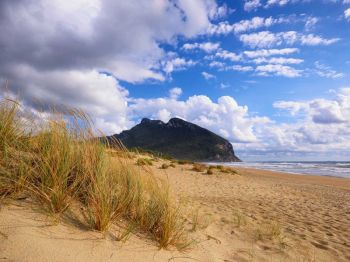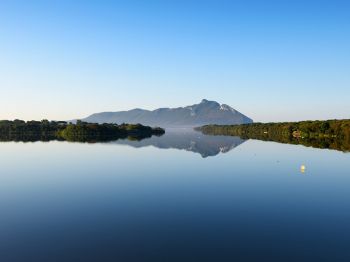Circeo Promontory
Where nature, myth, and history meet
On the Pontine plain, whatever your position and in whichever direction you are going, the Circeo Promontory will meet your gaze: a 541-metre high calcareous elevation, which is the Park's very symbol, and whose silhouette has always been stimulating human fantasy, depicting it as a dwelling of gods, sorceresses, and heroes.
Tradition has it that Ulysses arrived with his ship at today's Cala dei Pescatori on Lake Paola, and then fell victim to the bewitching Circe, whose profile would be visible still today along the mountain's silhouette.
The Promontory is the most characteristic landscape feature of the whole Pontine area. On its inner slope, known as "quarto freddo" (cold quarter), a thick thermophile forest grows; "quarto caldo" (hot quarter) is instead the outer, south-facing slope, where a less lush and demanding Mediterranean scrub consists of halophyte plants, better suited to salty air, droughts and high temperature.
The widespread presence of caves on the sea-facing slope makes this area particularly attractive from a geo-speleological point of view, and numerous prehistorical findings add to the interest. The best-known cave is Grotta Guattari, where a Neanderthal-type skull was found in 1939.
Today, we are struck by the Promontory's imposing and manifold beauty. Equip yourselves with maps and guides, as the Promontory's trails and points of interest are so many and so charming, that they may bewitch you, and you may get lost in beauty as Ulysses did many centuries ago.

The promontory seen from the dune
(foto di PN Circeo)

Promontory and Lake Sabaudia
(foto di Marco Buonocore)